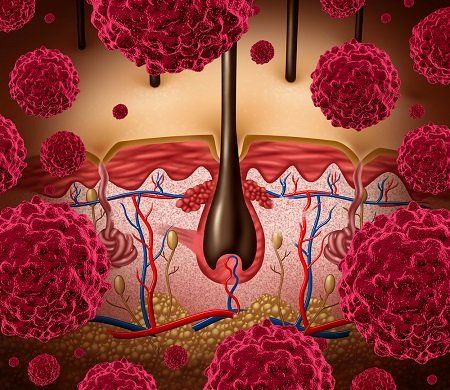Nivolumab Shows Efficacy in Patients With BRAF Wild-Type or Mutant Melanoma
According to a retrospective analysis of four clinical trials, nivolumab (Opdivo) was deemed safe and effective in patients with wild-type or mutant BRAF gene mutation, regardless of prior BRAF inhibitor or ipilimumab (Yervoy) treatment.
Image courtesy of Shutterstock

According to a retrospective analysis of four clinical trials, nivolumab (Opdivo) was deemed safe and effective in patients with wild-type or mutant BRAF gene mutation, regardless of prior BRAF inhibitor or ipilimumab (Yervoy) treatment. This was first reported in the Journal of the American Medical Association (JAMA Oncology) on May 21, 2015. Nivolumab is an anti–PD-1 therapeutic antibody, used to harness the power of the immune system to treat advanced melanoma.1
James Larkin, MD, PhD, and colleagues from various cancer centers in London, England and across the United States looked at the data of 440 patients from four nivolumab clinical trials. Of those, 334 carried BRAF, wild-type gene mutations and 106 tested positive for the BRAF V600 mutation. The objective response rates (ORR) were 34.6% (95% CI, 28.3-41.3) for the 217 patients with wild-type BRAF status, and 29.7% (95% CI, 19.7-41.5) for the 74 with mutant BRAF status.
The median duration of objective response was 14.8 months (95% CI, 11.1-24.0 months) for wild-type BRAF and 11.2 months (95% CI, 7.3-22.9 months) for mutant BRAF. This is important to note because before the development of ipilimumab, patients with advanced disease were expected to live for less than a year after diagnosis. When caught early it is very treatable, but late-stage melanoma is difficult to treat. Metastatic melanoma is a rapidly progressing disease with an 8-month median overall survival and a 25% 1-year survival rate.2
Median time to objective response was 2.2 months in both patient groups. The incidence of treatment-related adverse events of any grade was 68.3% in the wild-type BRAF group and 58.5% in the mutant BRAF group, with grade 3 or 4 adverse events in 11.7% and 2.8% of patients, respectively. Treatment-related side effects were fatigue, pruritus, rash, and diarrhea, which occurred in at least 5% of patients.
Treatment with nivolumab looks promising for patients with wild-type or BRAF-mutant melanoma.
References:
- Larkin J, Lao CD, Urba WJ, et al. (2015). Efficacy and Safety of Nivolumab in Patients With BRAF V600 Mutant and BRAF Wild-Type Advanced Melanoma. JAMA Oncology.
- Genentech. (2015).BRAF in metastatic melanoma.